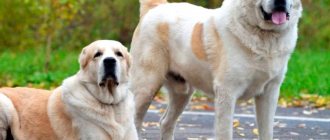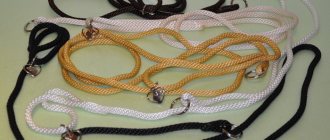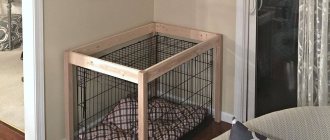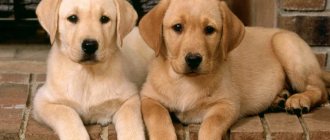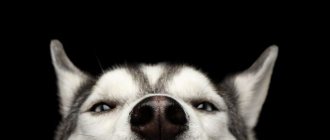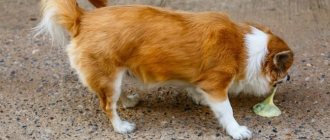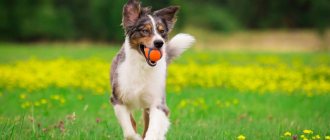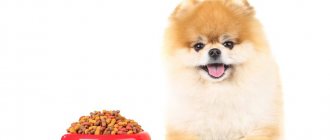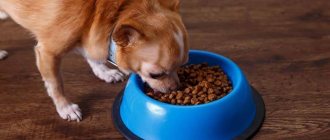Affenpinscher
This small dog with a flat face-like muzzle and fur sticking out in different directions looks more like a cartoon character than a dog of noble blood. Appearance may even seem repulsive. However, this is precisely the case when appearances are deceiving. In fact, the Affenpinscher is the life of the party, adoring his owner.
Disadvantages include being overly sociable: Affenpinschers hate being left alone and love attention. They may show jealousy towards other family members if they suddenly decide that the owner is paying too much attention to someone else. The Affenpinscher is a self-confident dog that can begin to consider itself the main one in the house and ignore the owner’s commands. Therefore, it is important to be patient and consistent in parenting.
Breed characteristics of German Shepherd puppies
It is quite difficult to recognize the purebred puppy. First of all, you need to ask how many babies were in the litter. In large numbers (more than ten), they often lack breast milk, which causes developmental delays, lack of good health and reliable immunity. You should pay attention to the mother. A true breeding German Shepherd is not bred more than once a year, so as not to deplete its strength. It is normal for a bitch to look thin or shed, but her appearance should be healthy and her behavior active.
If the litter is not a mixed breed, all babies are similar to each other, their height and weight are approximately equal. The exception is Germans of different sexes - in most cases, males are slightly larger than females. It is worth taking a closer look at the behavior of the puppies and the activity of each one.
The main external signs of a purebred German Shepherd include the following characteristics:
- wool of moderate length;
- no fringes near the ears and on the neck;
- strong and strong bones;
- limbs are straight, with large joints;
- scissor bite;
- blue eyes at birth;
- paws with voluminous pads and dark claws;
- straight tail.
Making the right choice is quite difficult. It is necessary to examine the baby, study the features, but not purchase it before he is five weeks old.
Dutch Smoushond
The appearance of this dog can easily pass for a yard dog: its white-yellow, coarse fur sticks out in different directions, its ears are drooping, its eyes are sad. The size of the Smoushond is average: height at the withers is 36-42 cm. The closest relative is the German Schnauzer.
The Dutch Smoushond was originally bred to keep stables and kill rats. This is a gentle and loyal dog that is easy to train. Gets along easily with other animals and children. Smoushonds are cheerful, active, fearless, and patient. The best place to keep it is a country house with a large area for running and playing. However, you can also keep it in a city apartment.
American Staghound
Another name for the breed is American Deer Dog. These are quite large dogs, reaching 80 cm at the withers. The breed appeared as a result of experiments in crossing the Scottish Deerhound and the Greyhound. From the first, the Staghound got rough fur, a beard, and large size; from the second, an elegant body with a thin tail and a pointed muzzle.
The Staghound is suitable as a guard dog: it has excellent eyesight and hearing. However, due to their soft and calm nature, they are not suitable for security guards and bodyguards. Due to its impressive size, it is better to keep it in a private house than in a city apartment.
The smallest dog in the world
The Chihuahua is deservedly recognized as the smallest among other dog breeds.
Dogs of this particular breed have been included in the Guinness Book of Records several times. In 2022, Millie holds the title of the smallest dog in the world. Its weight is only 400 grams and its height is 9.65 cm. As a comparison, ordinary Chihuahuas weigh on average several kilograms.
Irish Wolfhound
In size, appearance and character it is similar to the American Staghound. The wolfhound is one of the largest dogs in the world. Height at the withers is 79 cm. The breed was bred to hunt wolves and guard herds.
The “Irish” are calm and balanced, but if they attack the owner, the dog will demonstrate a bite force of 941 N. However, these are extreme measures and the wolfhound will not make a full-fledged defender. The watchman from the “Irish” is also so-so. Wolfhounds are good-natured and silent, so they will not make a fuss because of a stranger passing by. They may not get along well with small animals, in particular cats, due to their strong hunting instinct.
Mongrel dogs photos with small names
An interesting fact was discovered by geneticists who studied the genotype of mongrels on different continents: in Eurasia there live outbred dogs, whose genotype completely lacks the genes of purebred domestic animals; in Europe and the Middle East there are practically no mongrels of local origin left - they were replaced by animals with an Asian genotype. In Central and South Asia, on the contrary, a predominance of yard dogs with an aboriginal (local) genotype was revealed, and in America, outbred quadrupeds appeared from purebred dogs imported from Europe.
Border Terrier
The sable color, rough coat, beard and floppy ears hint that this is a cross between a German Shepherd and a Court Terrier. This breed of dog originated in England and was bred specifically for fox hunting. Its small size (40 cm at the withers) helps it climb into holes, and its hard fur and thick skin protect it from fox bites.
Like most terriers, the Border is active and curious. The dog gets along well with children and will not miss the opportunity to run and play with them. Gently loves family, pets and just strangers. This is an incredibly friendly and positive dog without an ounce of aggression or jealousy.
A significant drawback is the exploratory, mobile nature. At home, the Border Terrier, out of boredom or simply curiosity, is ready to chew everything it sees, including furniture and carpets. In a private house, due to irrepressible energy, he is able to dig up the entire plot. Therefore, it is important to accustom him to order, as well as take him on long walks with outdoor games.
Why do I prefer to have mongrels/pedigreed dogs?
These two notes, written by me and Oksana Dubinina, were not written to convince you to get this or that dog. The boundary separating a mongrel from a purebred dog is an illusion. Every breed of dog began with mongrels; most mongrels in the world, even in the wildest corners of the planet, carry the blood of purebred dogs, somehow brought there by travelers, lost by hunters...
Any dog is first and foremost a dog.
However, preferences for one dog or another do exist. It’s good when people don’t make an “idol” out of pedigree/mongrel breeding, but understand the differences and advantages of the dogs among which they choose their pet.
Talking about these advantages - objective and subjective - so that you can think about what is really important to you and what is not, was Oksana’s and my task. We also wanted to talk about purebred dogs and mongrels without any connection with animal protection. Any animal can get into trouble, and the idea that “a mongrel means unhappy, sick and pitiful” does more harm to dogs of any origin than it helps.
- Why I prefer to have mongrels
- Why I prefer to have purebred dogs
Next, I post a note about mongrels as more thoughtful and complete. If there are requests from those who do not want to follow the links, I will post the first note in Snob.
———
Author of the article Oksana Dubinina : Head of the Foundation for Promoting the Harmonization of Relations between Animals and Society “Not Just Dogs” (Moscow), Leading specialist in working with dogs at the “Paws Expel Troubles” Foundation (Holland). Graduate of the course “Animal Psychologist's Office” at the School of Applied Ethology.
Yen-li (at the Panda shelter), found as a puppy on the street, couldn’t find an owner in Russia, lives in Holland
Mutts have two objective, undeniable and extremely important advantages over purebred dogs for the entire canine population of the planet. First: each mongrel is unpredictable and unique in appearance and character. Second: mongrels have greater genetic diversity, which in some situations can be a matter of life and death, which I will talk about later.
I’ll start with the first thing: impressions of the dog, that is, with its appearance. I love mongrels very much for their interesting exterior - always different and unique. Of course, depending on the fashion for certain breeds at a given time in a given area, the appearance of mongrels also changes greatly. For example, in Moscow, mongrels of the 50s looked like different-sized huskies and hounds. In the 90s and 2000s, everyone was “shepherd-like”, since the main breed in the country was the German shepherd. And now there are Moscow mongrels in every way. Beautiful, varied... and you can never predict exactly what uniqueness will grow out of a mongrel puppy!
Grunya, my personal dog from a construction site near Moscow, “formerly wild”))
Choosing food or rain gear for your pooch at the pet store is a fun experience. The seller always asks his main question: “What breed are you?” And he invariably falls into a stupor after the answer “Mongrel, 30 kilograms.” The most resourceful ones ask: “Well.... Who does she look like?” And then you realize that you have an individual)))…. Who does she look like? On me!
Now about the second one. Mutts have great genetic diversity. Purebred dogs must meet the standard in appearance, and for this they must change genetically. In order to consolidate a certain trait in a breed, many offspring are obtained from a small number of outstanding dogs. Breeders call this the "curse of the founding dog." And the result is genetic diseases that are almost included in the breed standard along with other traits for which this breed was bred (you can read more about this at the link).
Genetic diversity always decreases with targeted breeding. Poodles with floppy ears do not produce poodles with erect ears. Is it good? Of course, this made sense - to breed a dog with floppy ears (any signs from the standard of any breed can be cited here). Then why are mongrels better? Let me give you an example. In a village near Moscow, in one house, puppies are born to a dog of a hypothetical Italian breed X, and in another, to mongrels. Both are charming. Among the X puppies, some are larger and smaller, bolder and more cowardly, one has slightly longer ears or a shorter tail. But it’s immediately clear that this is an Italian X breed, because in general they are all similar.
Bijay and Darma, he is from the Call of the Wild shelter, she strayed to the dachas near Moscow as a 2-month-old puppy
With mongrels everything is different. One puppy is fluffy, another is smooth-haired, a third with erect ears, a fourth with semi-erect ears, some are larger, some are smaller. Exactly the same diversity exists among signs that we do not see with our eyes. For example, such a sign may be susceptibility to piroplasmosis, from which so many dogs die in the Moscow region.
The probability of finding a puppy of breed X, which is guaranteed not to get piroplasmosis, is very low - the selection was not carried out on this basis. But from the variety of mongrel puppies whose ancestors lived in this village from time immemorial, there is a high probability of choosing one that will never get sick with piroplasmosis. He does not need any drops or collars in this area (although he may be susceptible to other diseases that ticks transmit in other countries, for example, ehrlichiosis, Lyme disease or spotted fever - and these diseases may not be a problem for local mutts, whose ancestors passed through natural selection in these parts!).
Mutts are an invaluable and healing source for many dog breeds that exist or will be developed in the future!
And now let’s move on from the objective advantages of mongrels to the subjective ones. The most pleasant thing for me
When I meet a mongrel puppy, my personal biological mechanisms are triggered when my “heart skips a beat” from adoration! Mongrels are very different, each is unique and interesting as an object of study. And, of course, they are terribly funny
Remember your first love in the dog world. Surely, most dog lovers first “fell in love” with a mongrel who lived with their grandmother in the village or in the courtyard of a high-rise building. And you dreamed of taking her home or even took her... but some were separated from this first love by a strict parental decision. Now you have become an adult, but you can no longer create such a dog, even if you are a breeder. The probability of deliberately repeating many of the characteristics in one dog is too small... But among the many mongrels, finding “the one” similar to your first love in appearance or character is quite possible! With this you can express your love, if not to that dog from the past, then in honor of it - to its brother.
I really love dogs in general, both purebred and mongrel. But I prefer to have mongrels. I devote a lot of time to them, making sure that they receive enough exercise for their temperament: physical and intellectual. And I always come across amazing stereotypes.
I often hear the question: “What breed is this?” There is a stereotype in our heads: if you are a mongrel, then you are dirty and unhappy, and if you are beautiful, cheerful and well-mannered, then you are a thoroughbred.
This stereotype gives rise to many mistakes, for which both dogs and their owners later pay. It happens that people take a mongrel into their home out of pity, and not because they want to have a full-fledged four-legged friend in their life. But for a dog to be an eternal object of pity is not great happiness. If she has “baggage” from the past, she will need time to adapt, but then she will become just a family favorite, beautiful and happy with life. It also happens the other way around: people want to adopt a “no-problem dog” and don’t even look at mongrels. Meanwhile, mongrels born in the home of loving owners cause their owners exactly the same usual “problems” as purebred puppies of the same age and temperament. And the character of an adult mongrel is even more well known. If a person has doubts, he can always invite a canine specialist to look at the dog, even conduct several classes - exactly the same as a responsible person does when he takes an adult purebred dog into his home.
The second stereotype is that a dog reflects a person’s status. For many people (like me!) a friend should not have a set of “standards”. The choice of a dog, of course, depends on what role you assign to it in your life. I just need a companion, a dog for the family, because with her my life is much more active, more fun and happier! And I’m much thinner than I could be. But what origin my dog comes from doesn’t matter to me at all. If you read interviews with famous people, you will find many celebrities around the world who share the same views. Quite the contrary, the modern tendency in the world is to brag about the uniqueness of a dog, and not about its breed.
Bobik, born and lived on the street for about two years, was such a “village dog”, now lives in Holland. The purebred corgi is Bobik’s friend and the first dog in their owners’ family.
And finally, the third stereotype, the most harmful. Purebred dogs are bred because of their predictability. But life can greatly affect the appearance of a purebred dog (for example, ears may not stand up due to a lack of calcium), and, even more so, its character if the puppy had to change owners several times or was simply raised incorrectly. And then the owners, instead of solving the problem, begin to consider themselves victims of deception. In essence, they become hostage to the belief that their trouble is “the mistakes of the unscrupulous. In all dog behavior problems, the characteristics of the individual dog are more important than the characteristics of the breed. They should live in a house with a dog, not a “breed”. For me and those like me who prefer mongrels, this problem usually does not arise. We are prepared in advance for the fact that we do not know what the dog will be like. There is no point in us complaining about the breeder or anything else. We can only “carry our cross”, accept some things in the dog as its personality, and re-educate others. And we perceive our happiness with the dog as our own luck and merit, and not some abstract breeder.
Alaska, was born and lived in a shelter for five years, is now a pet, loves cats very much)
Drathaar
Another name is the German Wirehaired Pointer. A large breed (up to 68 cm at the withers), which was bred for hunting. Drathaar is able to find a downed bird and drive a wild boar. Due to its large size, hyperactivity, and hunting instinct, the breed is poorly suited for keeping in an apartment. You don’t just need to walk with the drathaar, you need to train it. It is best to engage your dog in sports, especially since representatives of this breed are very trainable.
This is a friendly, silent breed that becomes attached to one owner. Good hearing and keen eyes make the drathaar an excellent watchman. Males are prone to dominance, but rarely show aggression towards people and animals. They are wary of strangers and other pets.
Photo source: pixabay.com
How to understand what a puppy's character will be?
It's quite simple:
- if a puppy whines, runs away and hides, shakes in horror at the sight of a stranger, most likely he will grow up to be a cowardly-aggressive dog, yapping indiscriminately at all external stimuli (strangers, other animals, a doorbell, the sound of a car passing outside the window, etc.) .P.);
- if a puppy, at the sight of a stranger, boldly rushes at him, barks, tries to bite, serious problems with obedience and aggressive (including biting) behavior in the future are possible;
- if the baby comes up to you (even if hesitantly, but comes up when called), licks his hands, wags his tail, he is probably all right mentally and does not expect any special problems with obedience (of course, with proper upbringing).
